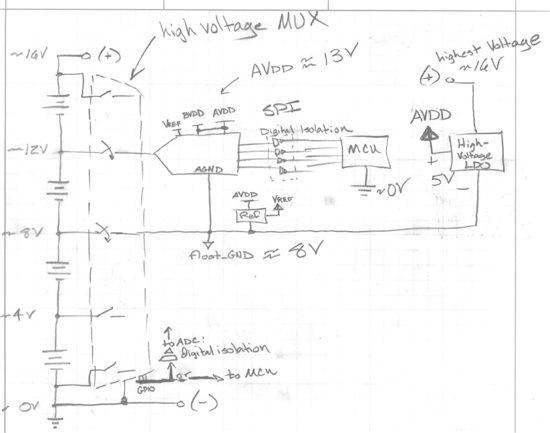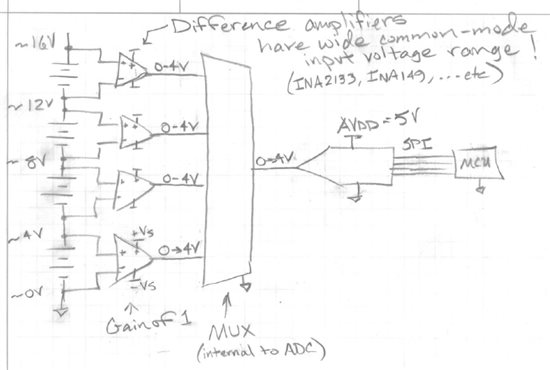Hello, sorry for my English
I want to realize a board for reading a few lipo battery's. But to read the correct potential of a cell, I have to connect the negative terminal of each cell to AGND. Therefore I want to use a 16channel analog multiplexer with 4 select pins and I want to connect the 4 select pins to the GPIO's of the ADS7953 and the output to AGND. With this combination, I could use the ADS7953 in manual mode and I chance the GPIO's to chance the multiplexer and the AGND potential. Then I could read the correct cell potential.
Is my plan possible with the ADS7953 and a microcontroller?
Which 16channel analog multiplexer could I use?
Or are there any other opportunities to get the correct cell potential from the balancer output?
Greetings
Philipp




